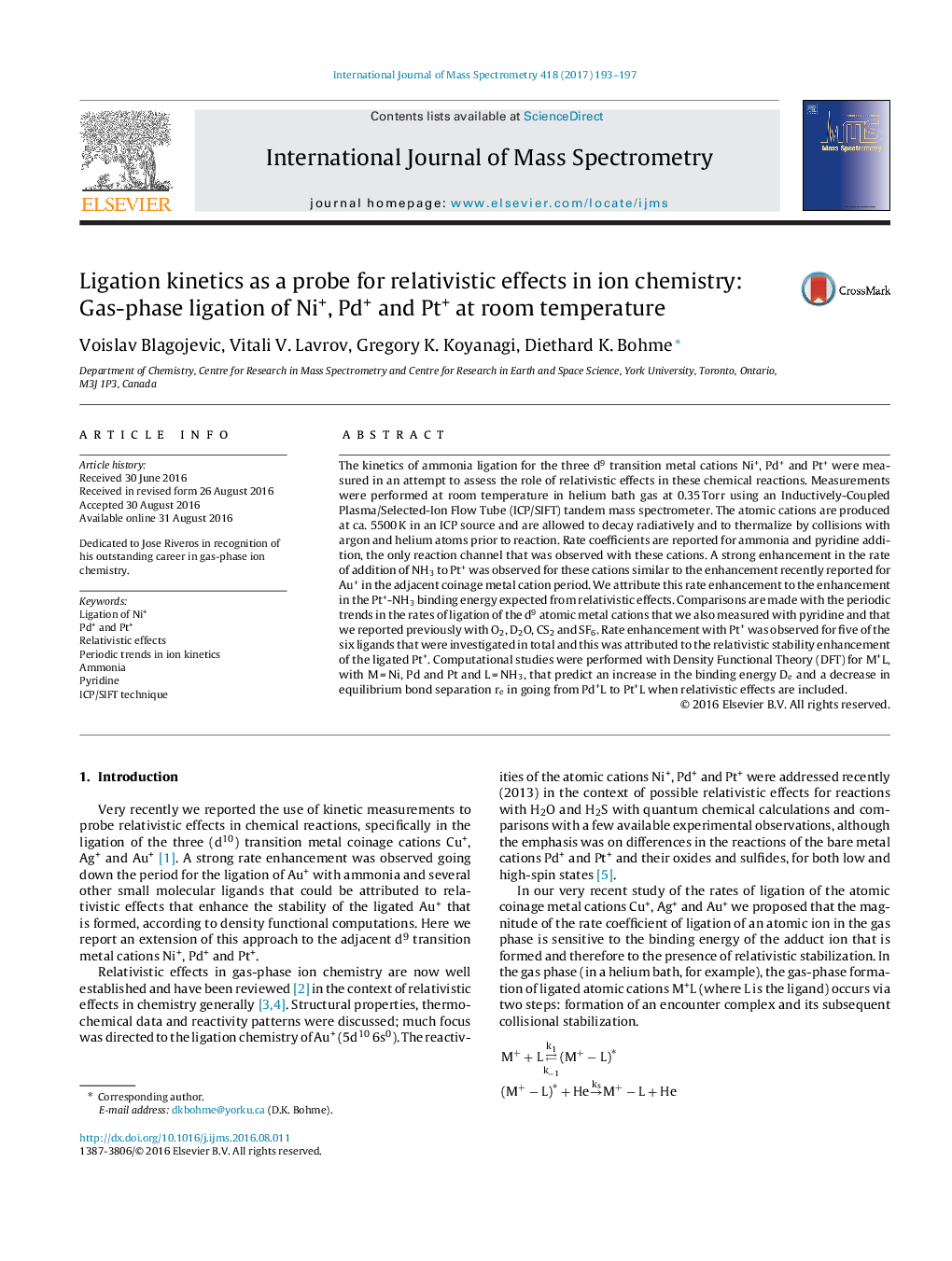| کد مقاله | کد نشریه | سال انتشار | مقاله انگلیسی | نسخه تمام متن |
|---|---|---|---|---|
| 5134234 | 1492214 | 2017 | 5 صفحه PDF | دانلود رایگان |

- Measured addition reactions of Ni+, Pd+ and Pt+ with ammonia.
- Identified trend down the periodic table.
- Observed relativistic enhancement for ligation of Pt+ with ammonia.
- Assessed relativistic enhancement with relativistic binding energy computations.
- Provided overview of relativistic enhancements with five other ligands.
The kinetics of ammonia ligation for the three d9 transition metal cations Ni+, Pd+ and Pt+ were measured in an attempt to assess the role of relativistic effects in these chemical reactions. Measurements were performed at room temperature in helium bath gas at 0.35Â Torr using an Inductively-Coupled Plasma/Selected-Ion Flow Tube (ICP/SIFT) tandem mass spectrometer. The atomic cations are produced at ca. 5500Â K in an ICP source and are allowed to decay radiatively and to thermalize by collisions with argon and helium atoms prior to reaction. Rate coefficients are reported for ammonia and pyridine addition, the only reaction channel that was observed with these cations. A strong enhancement in the rate of addition of NH3 to Pt+ was observed for these cations similar to the enhancement recently reported for Au+ in the adjacent coinage metal cation period. We attribute this rate enhancement to the enhancement in the Pt+-NH3 binding energy expected from relativistic effects. Comparisons are made with the periodic trends in the rates of ligation of the d9 atomic metal cations that we also measured with pyridine and that we reported previously with O2, D2O, CS2 and SF6. Rate enhancement with Pt+ was observed for five of the six ligands that were investigated in total and this was attributed to the relativistic stability enhancement of the ligated Pt+. Computational studies were performed with Density Functional Theory (DFT) for M+L, with MÂ =Â Ni, Pd and Pt and LÂ =Â NH3, that predict an increase in the binding energy De and a decrease in equilibrium bond separation re in going from Pd+L to Pt+L when relativistic effects are included.
181
Journal: International Journal of Mass Spectrometry - Volume 418, July 2017, Pages 193-197